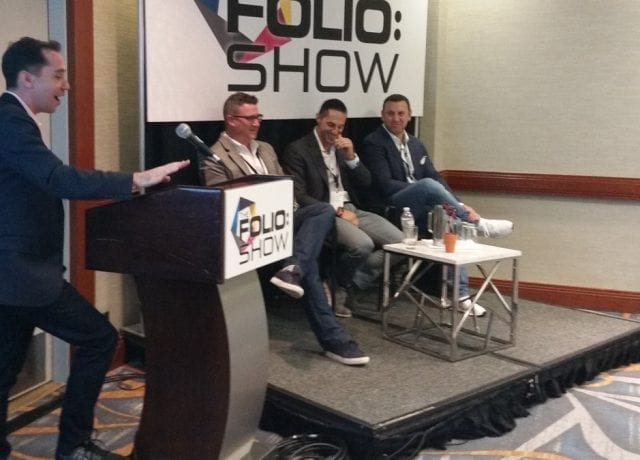This year’s Folio: Show in NYC delivered a wealth of actionable ideas for ad sales professionals. The sales track highlighted industry topics focused on strategizing in this changing advertising landscape.
Todd Krizelman, CEO of MediaRadar, led panel discussions surrounding how to monetize video, build quality client relationships, and create new revenue with native.
Here are 3 Key Takeaways from the 2017 Folio:Show:
The success of a video ad is more dependent on content relevance and user experience, than the length of the ad itself.
- The average video ad runs for 15 seconds, and is continuing to shorten in time. Madeleine DiSalvo of National Geographic, shared that as long as you craft the ad around the seconds, it’s not so much about the length of time. You should aim to create content that stays true to your brand, people are more inclined to interact.
- User experience is important when considering implementing auto start video and autostart sound. If you tend to dislike autostart sound, so will your consumers.
The days of the 3 hour lunch are over.
Time is not easy to schedule. It is much more difficult to take a client out for golf now than ever before. John Graney, VP of Integrated Sales at Bonnier, suggests to instead build relationships by communicating your intentions effectively. In order to stand out and boost relationships, you need to be transparent and straightforward about your approach. The honesty of what you are actually offering to your client is very critical to building a lasting partnership.
Steven Grune, SVP/Group Publisher at Meredith, also mentioned that a great way to build credibility as a new sales professional is using measurement tools to quantify your goals and return on ad spend.
Programmatic Native – Competitor or Partner?
Native strategies vary with every publisher. Test what works best for your business. Programmatic native companies like Nativo aren’t necessarily viewed as competitors to publishers. For Men’s Health, programmatic buying methods have actually helped identify relevant brand to pitch and find upsell opportunities. POPSUGAR, on the other hand, prefers a direct buying model. Since the YouTube Scandal, publishers have been much more hesitant when using programmatic buying strategies. To protect their brand, POPSUGAR only implements direct buying methods.



